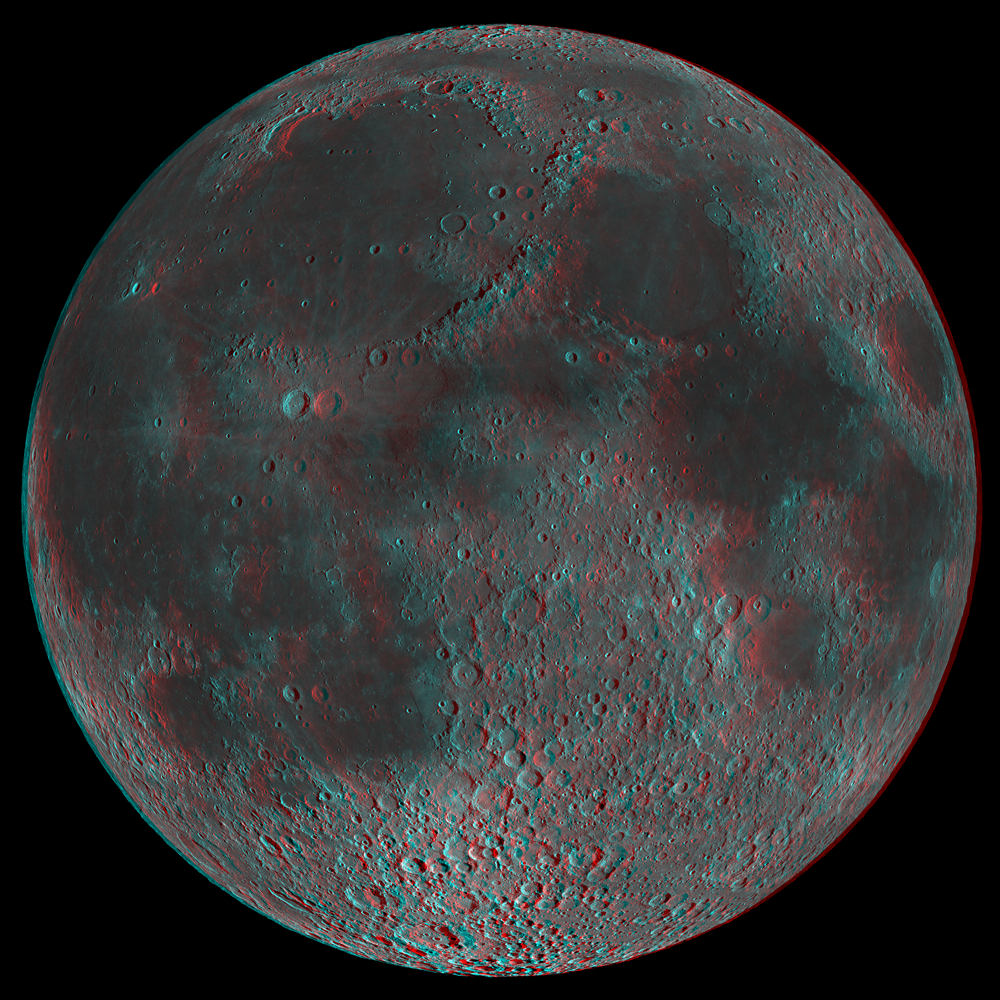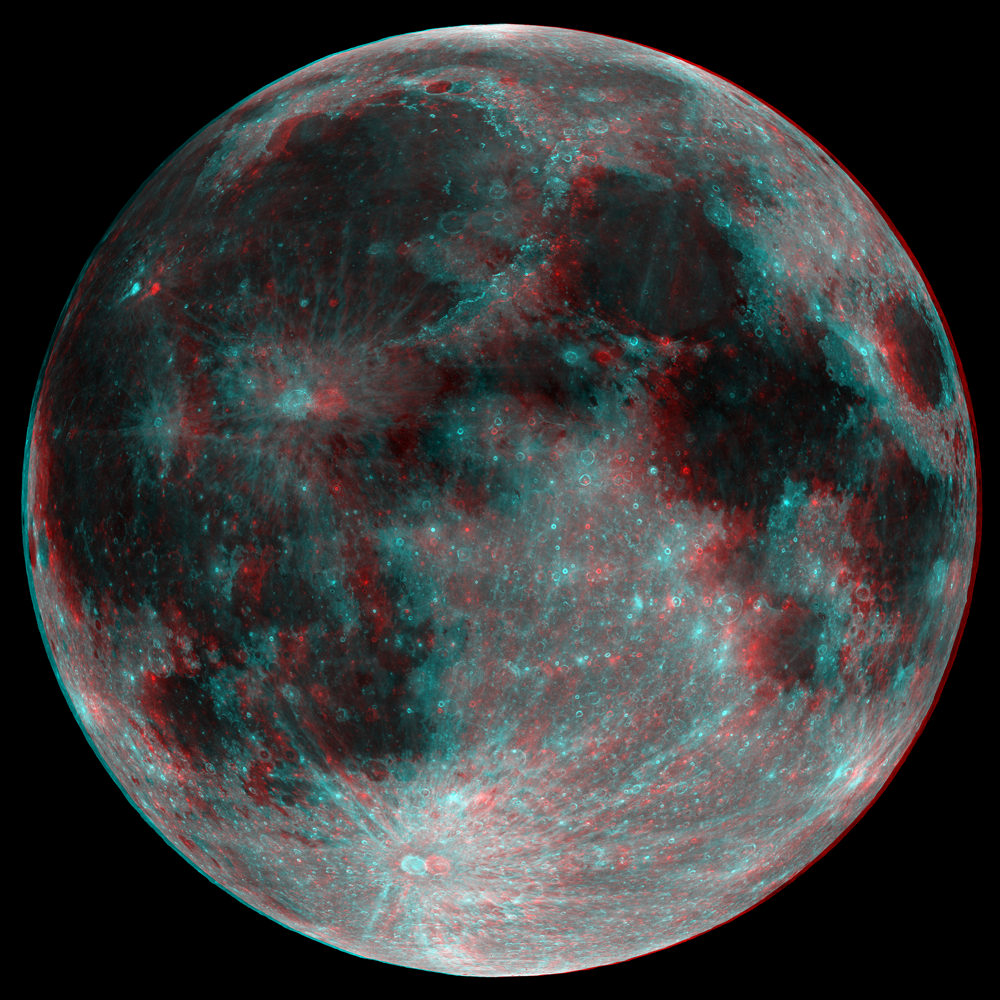
Today’s Featured Image is an anaglyph of an LROC Wide Angle Camera (WAC) mosaic of the lunar nearside taken at low-Sun conditions. You will need 3D stereo glasses to see it pop off your screen! Don't have your own red/blue 3D glasses? You can find instructions on how to make your own here. The two perspectives that make up this anaglyph were generated by draping the same low-Sun WAC mosaic (below) of the lunar nearside over the Global Lunar DTM (Digital Terrain Model) 100 m topographic model (GLD100) with two different sub-Earth points.
We can generate different anaglyphs utilizing other LROC WAC mosaics, such as the WAC Global mosaic or the WAC normalized reflectance map (below).
Images taken at different lighting conditions reveal different surface properties. For example, low-Sun images are great at accentuating small topographical differences due to shading and shadows created by the Sun being close to the horizon, while high-Sun images reveal color or albedo differences of the surface. A strength of the growing WAC dataset is that each month the Sun is at a different angle, allowing analysis of the surface over the full range of Sun angles.

Planetary scientists use anaglyphs to visualize the 3D structure of planetary surfaces. For example, the HiRISE team has over three thousand anaglyphs of the Martian terrain available for scientific study and public use. This type of visualization is helpful with the intuitive and qualitative interpretation of a scene by revealing geologic relationships that are not obvious from a single 2D image.
Use your 3D glasses to view the full resolution low-Sun WAC mosaic anaglyph below!
Related Posts
Farside! And all the way around
Published by Raquel Nuno on 18 October 2013
